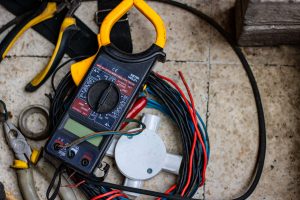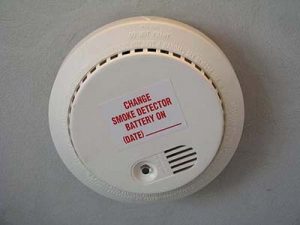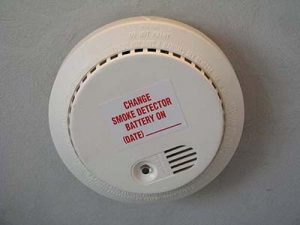 A lot has changed with the way homes are built and wired. Some decades ago a physical key and a lock was the only way you could go in and out of your home but today we have digital locks and virtual keys. Those who never thought of such possibilities for the future might have had a hard time incorporating changes like this in their home. Hence, as your go-to for all things electrical, we will discuss how to wire your house for the future.
A lot has changed with the way homes are built and wired. Some decades ago a physical key and a lock was the only way you could go in and out of your home but today we have digital locks and virtual keys. Those who never thought of such possibilities for the future might have had a hard time incorporating changes like this in their home. Hence, as your go-to for all things electrical, we will discuss how to wire your house for the future.
First, it is important to know that wiring your home for the future is a project that requires an expert electrician. It may seem demanding at the time, but you will reap the benefits in a few years or even months.
Future home wiring involves creating a system that allows you to combine the different wiring around the home into a network. It is built to enable the integration of various smart systems and sensors in the home now or at a later date. It also ensures that you can conveniently add more systems such as lighting, security, and internet communication systems for your comfort. When you think about it, wiring the home for the future is something everyone should do.
Learn the basics.
When wiring your home for the future, there are a number of systems that will control various functions across your property. These include:
- Audio and video
- Security
- Heating and cooling
- Computer and Internet
- Telephone
- Smoke detection
- Irrigation
These systems must be wired to a central location in the house. You must choose the control area wisely with the help of the electrician. The control area should possess the following features:
- A moderate room temperature
- Enough physical space for a wall panel and equipment rack
- Easy access, dust-free location
- Close to the area where service feeds like the Internet enters the home
- Lots of outlets
Components for the wiring
- Infrared (IR) controls
Infrared is the technology that represents remote control features. Several current homes and those of the future require remotes to control some installed automated systems. IR controls are used to make this possible. - Category 5e and Category 6 (CAT-5e AND CAT-6) cables
These cables are Ethernet cables that future-proof your house for years to come. They connect computers and all computer-based systems to a network. - Patch cables and Patch panel
Patch cables are used to connect devices to each other. They are used with a Patch panel to link all smart home devices. The Patch panel is like an organizer that houses plugged in electrical components and helps to distribute signals.
Wiring
Ensure your electrician runs three wires to each switch in the home- hot, neutral, and load wires. Although some electricians do this, it is important to state your preference to be sure you have a neutral wire for future home automation installations.
Next is the use of deep junction boxes. Deep junction boxes give you room to work and accommodate new systems. It is worth the peace of mind when you need to install in-wall devices.
Install cable conduits and terminate them into junction boxes. Cover these boxes with a faceplate if there is no urgent use for them. Make sure you have one in each room located at eye level. It is much easier to make this addition during construction than later when it is needed.
Include wiring in the ceiling or in the wall for speakers. This comes in handy when you need a speaker or audio system across rooms. Other variables for this wiring project like size, number, and type of wires can be discussed with your electrician.
If you want to get your home future-ready, give The Electric Connection a call today!





 There are certain times when an electrical home inspection is recommended. If you are just purchasing a home it’s a good idea to have it inspected so you can be sure you’re not buying into any major issues. When you have lived in your home for a while or if it is an older home, an inspection is a great idea to ensure that everything is running properly. Finally, if you are adding an appliance or doing any large renovations, you should have you electrical checked out to make sure that it can handle the new technology you’re bringing into your home.
There are certain times when an electrical home inspection is recommended. If you are just purchasing a home it’s a good idea to have it inspected so you can be sure you’re not buying into any major issues. When you have lived in your home for a while or if it is an older home, an inspection is a great idea to ensure that everything is running properly. Finally, if you are adding an appliance or doing any large renovations, you should have you electrical checked out to make sure that it can handle the new technology you’re bringing into your home. geles
geles One of the biggest fears a homeowner can have is the thought of losing their house to a fire. Home fires are far too common. All it takes is a small mistake or a little accident to create a horribly devastating fire that destroys all of the world possessions a family owns. One of the leading causes of a home fire can be blamed on faulty wiring. This is generally through no fault of the homeowner. There are nearly 375,000 house fires each year. There are a few things you can do to reduce the risk of your home catching fire explains an
One of the biggest fears a homeowner can have is the thought of losing their house to a fire. Home fires are far too common. All it takes is a small mistake or a little accident to create a horribly devastating fire that destroys all of the world possessions a family owns. One of the leading causes of a home fire can be blamed on faulty wiring. This is generally through no fault of the homeowner. There are nearly 375,000 house fires each year. There are a few things you can do to reduce the risk of your home catching fire explains an  There are so many dangers in our world it is hard to actually prevent them all. We do what we can to keep our families safe. Wearing seatbelts in the car, looking both ways before crossing a street and keeping working smoke detectors in the house can go a long way to preventing a tragedy. These are little things that cost nothing, but are so important. They are extremely valuable. Your
There are so many dangers in our world it is hard to actually prevent them all. We do what we can to keep our families safe. Wearing seatbelts in the car, looking both ways before crossing a street and keeping working smoke detectors in the house can go a long way to preventing a tragedy. These are little things that cost nothing, but are so important. They are extremely valuable. Your